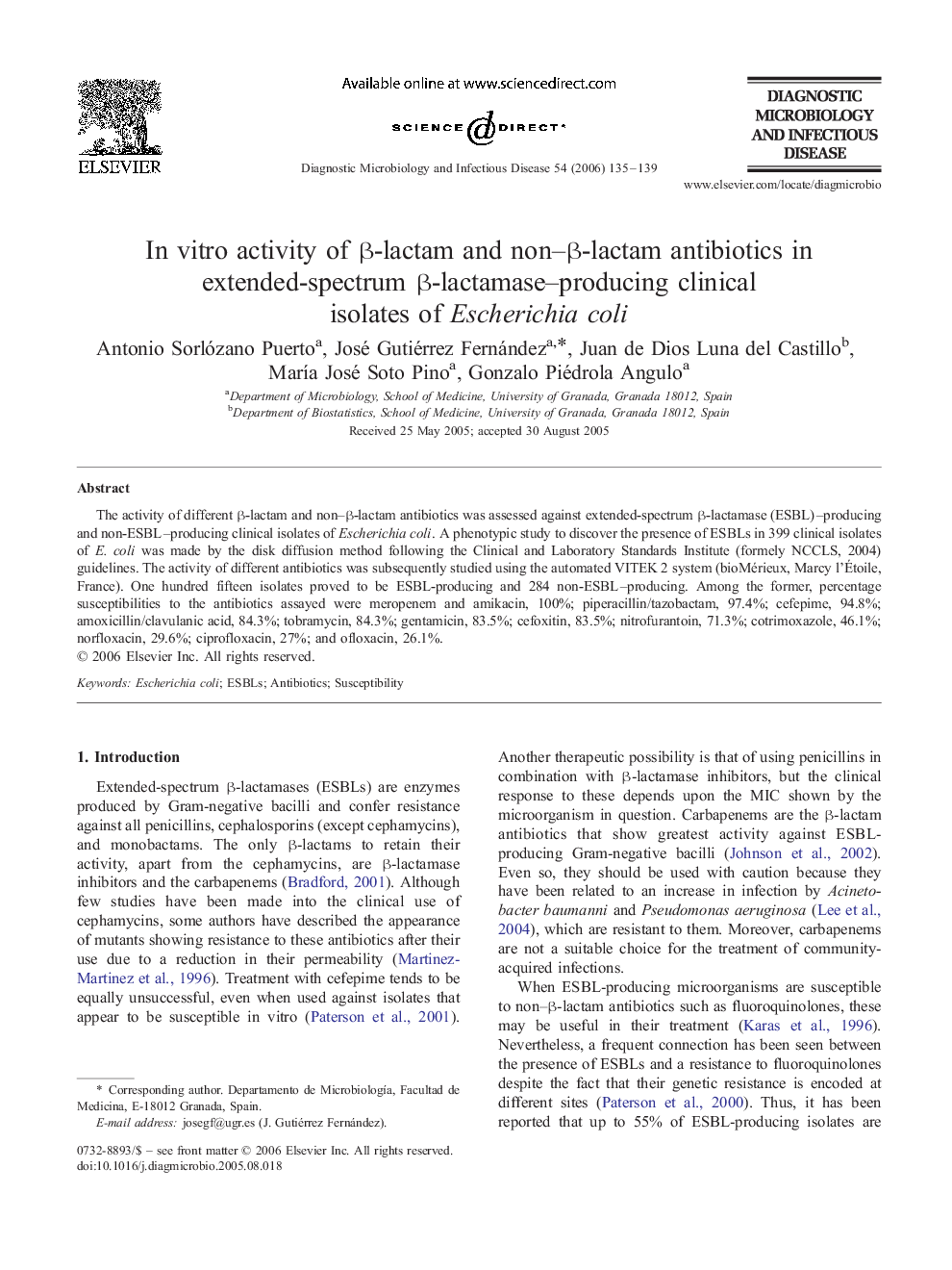| Article ID | Journal | Published Year | Pages | File Type |
|---|---|---|---|---|
| 3348650 | Diagnostic Microbiology and Infectious Disease | 2006 | 5 Pages |
The activity of different β-lactam and non–β-lactam antibiotics was assessed against extended-spectrum β-lactamase (ESBL)–producing and non-ESBL–producing clinical isolates of Escherichia coli. A phenotypic study to discover the presence of ESBLs in 399 clinical isolates of E. coli was made by the disk diffusion method following the Clinical and Laboratory Standards Institute (formely NCCLS, 2004) guidelines. The activity of different antibiotics was subsequently studied using the automated VITEK 2 system (bioMérieux, Marcy l'Étoile, France). One hundred fifteen isolates proved to be ESBL-producing and 284 non-ESBL–producing. Among the former, percentage susceptibilities to the antibiotics assayed were meropenem and amikacin, 100%; piperacillin/tazobactam, 97.4%; cefepime, 94.8%; amoxicillin/clavulanic acid, 84.3%; tobramycin, 84.3%; gentamicin, 83.5%; cefoxitin, 83.5%; nitrofurantoin, 71.3%; cotrimoxazole, 46.1%; norfloxacin, 29.6%; ciprofloxacin, 27%; and ofloxacin, 26.1%.
